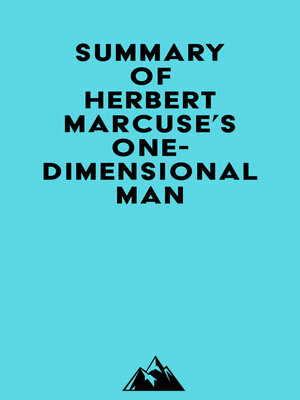
Sign up to save your library
With an OverDrive account, you can save your favorite libraries for at-a-glance information about availability. Find out more about OverDrive accounts.
Find this title in Libby, the library reading app by OverDrive.



Search for a digital library with this title
Title found at these libraries:
| Loading... |
Please note: This is a companion version & not the original book. Sample Book Insights: #1 Douglas Kellner's book One-Dimensional Man is a critical diagnosis of the present age, and it was immediately recognized as such by the New Left. It was written in the 1950s and early 1960s, and it reflects the stifling conformity of the era. #2 Marcuse developed a critical, philosophical perspective from which he could criticize existing forms of thought, behavior, and social organization. He believed that dialectical philosophy could promote critical thinking. #3 Critical thinking derives its beliefs, norms, and values from existing thought and social practices, while uncritical thinking simply accepts them. Critical thought seeks alternative modes of thought and behavior from which it creates a standpoint of critique. #4 Marcuse was extremely eager to work on a book on dialectics with Horkheimer, who felt himself to be too involved in his work as director of the Institute to be able to devote sufficient time and energy to the project. They moved to California, where they had an opportunity to devote themselves full time to philosophical studies.






